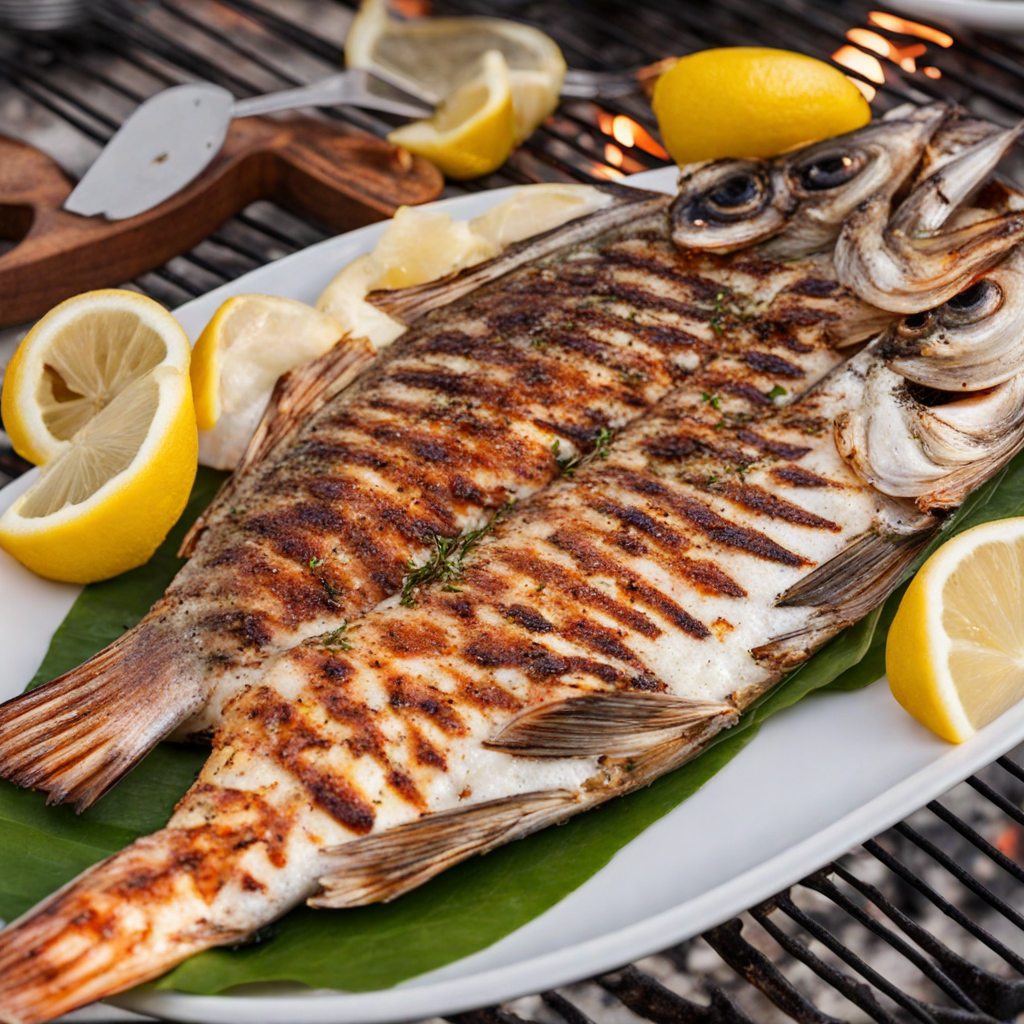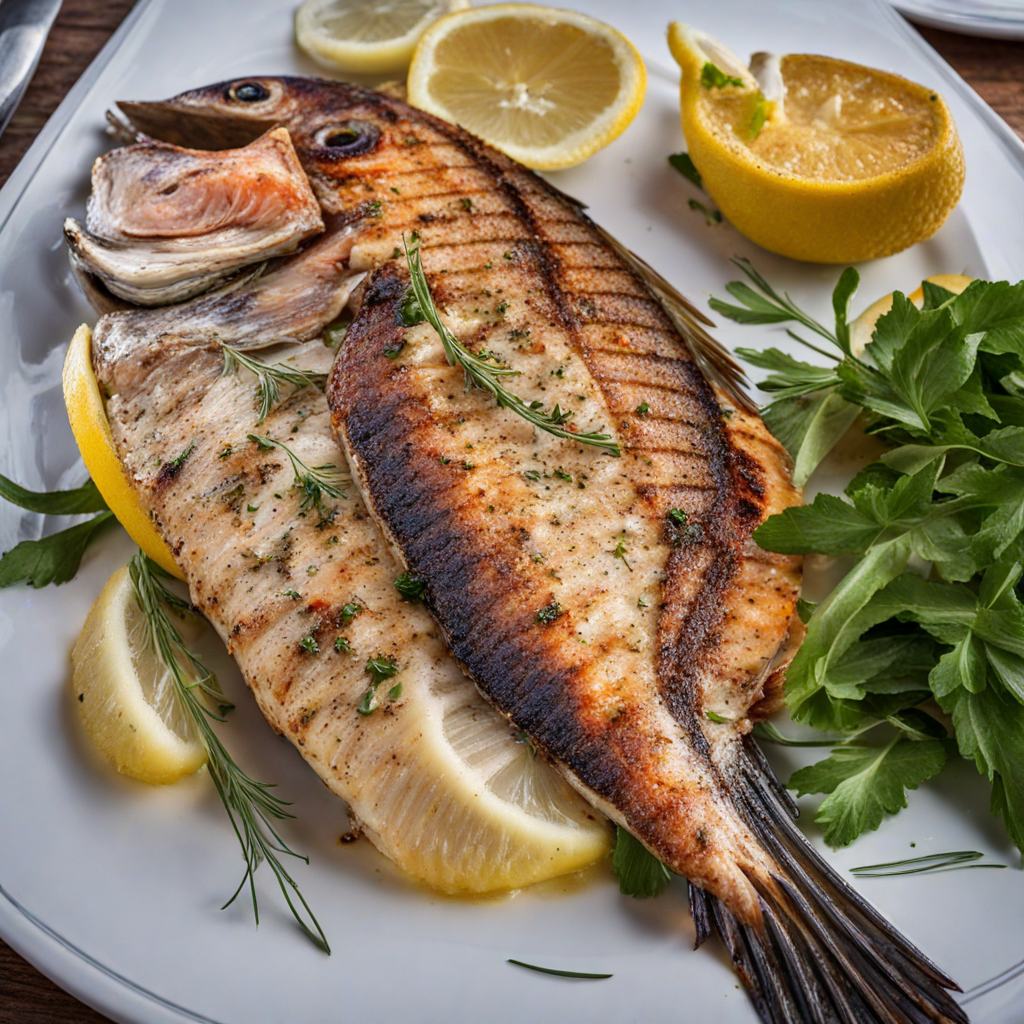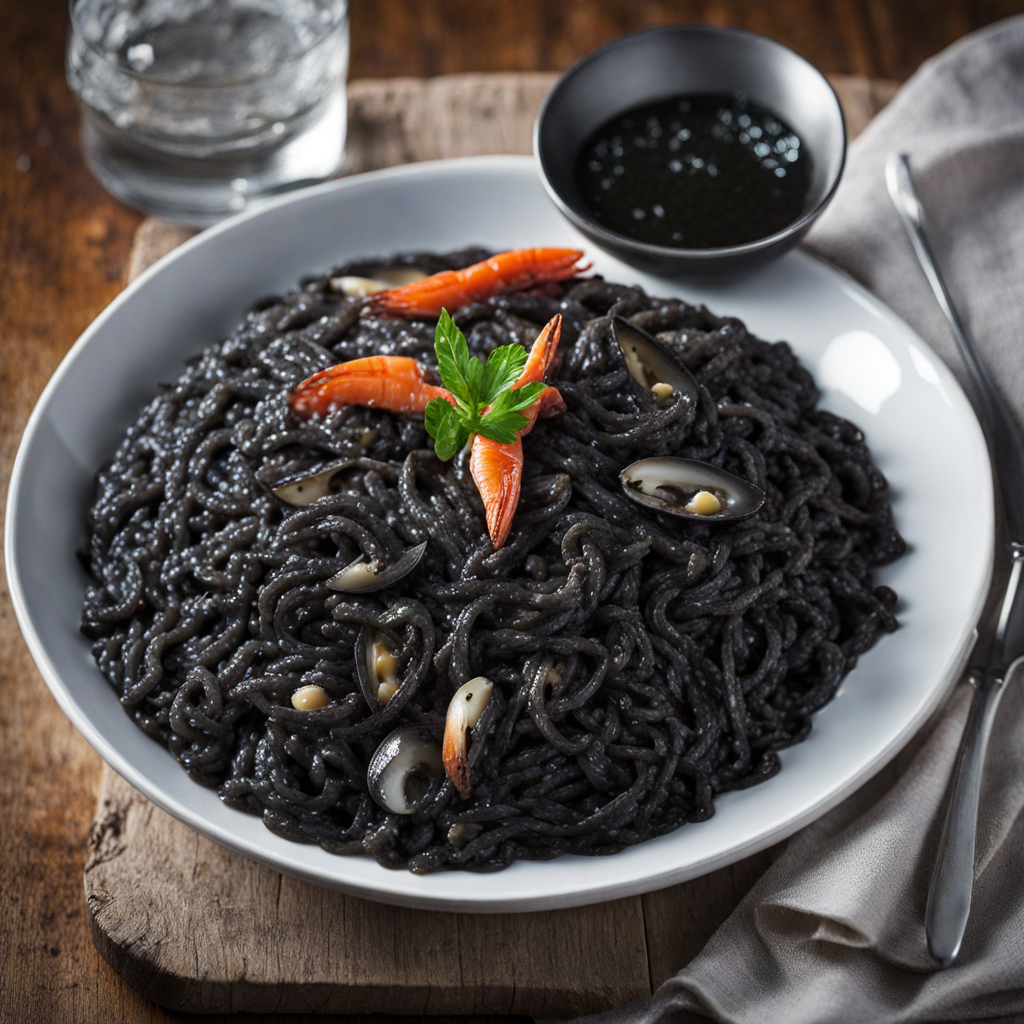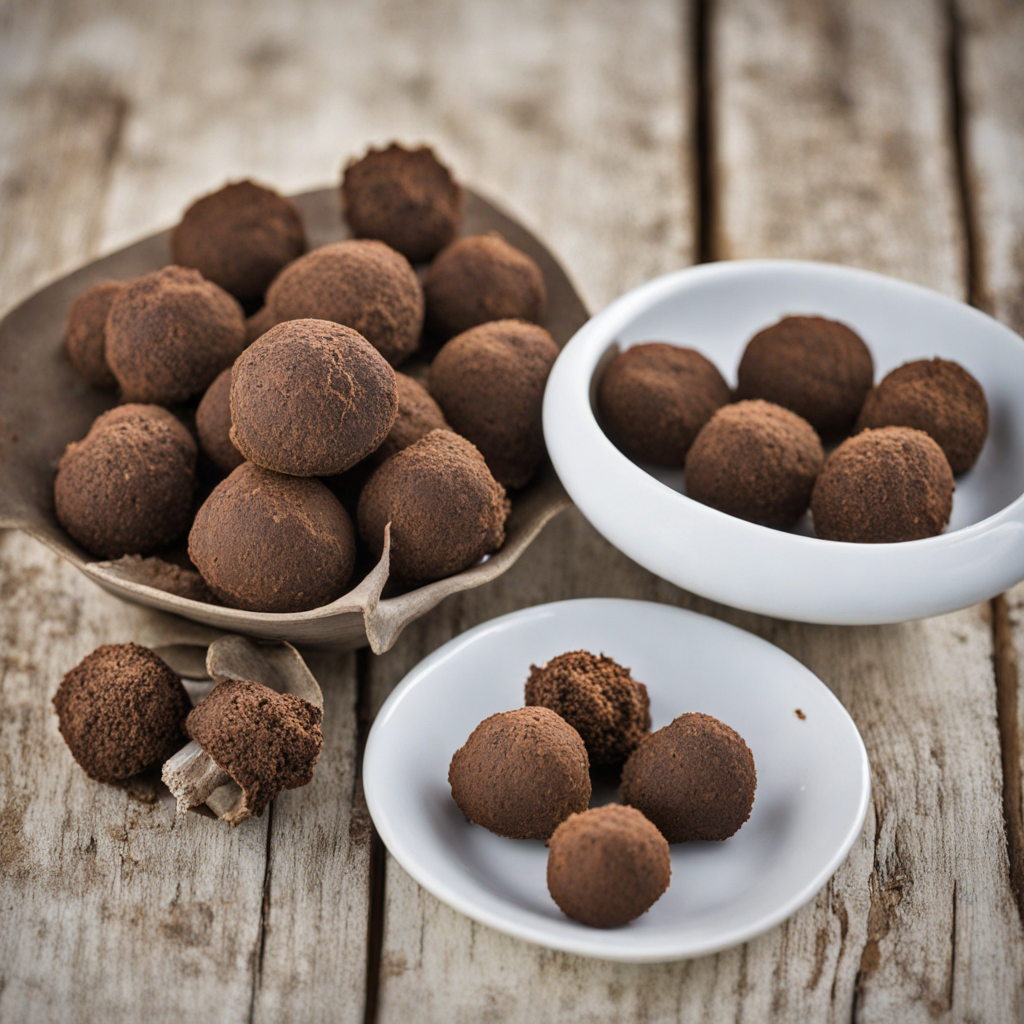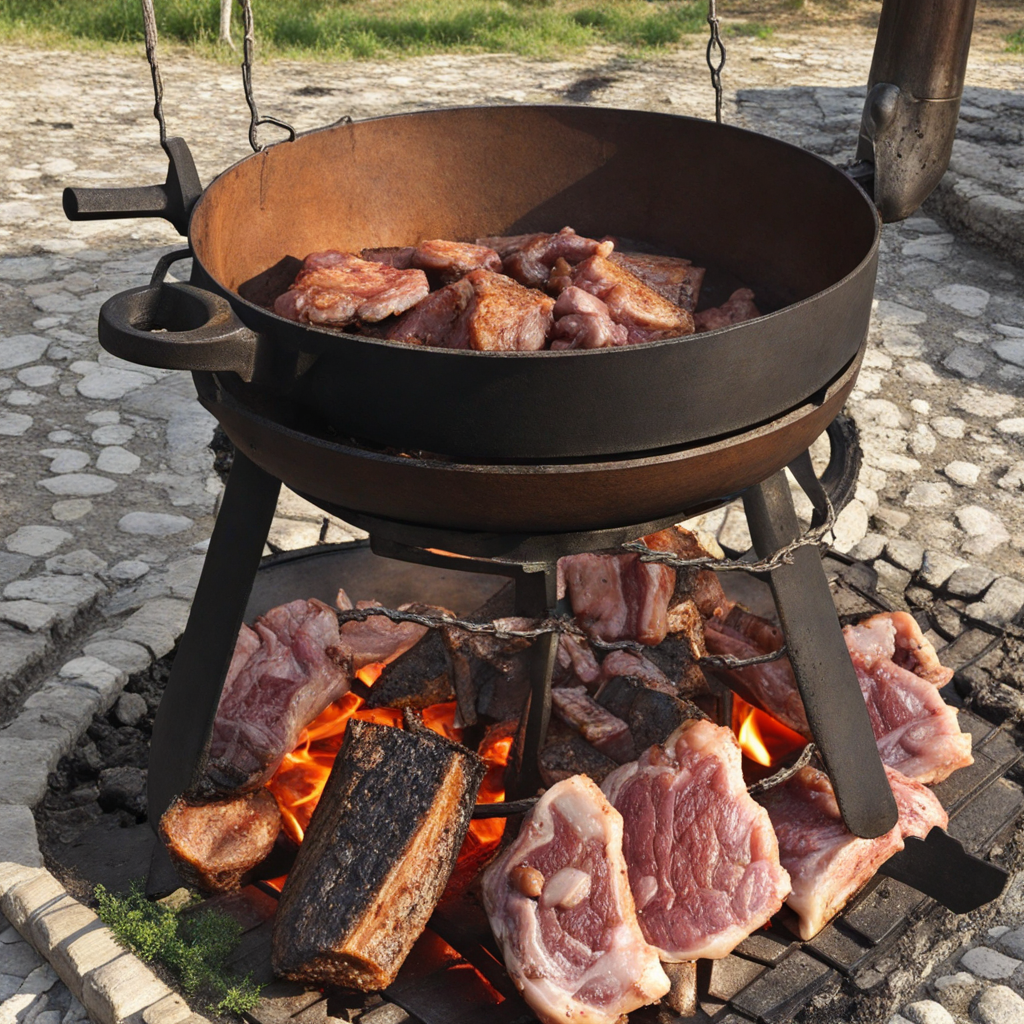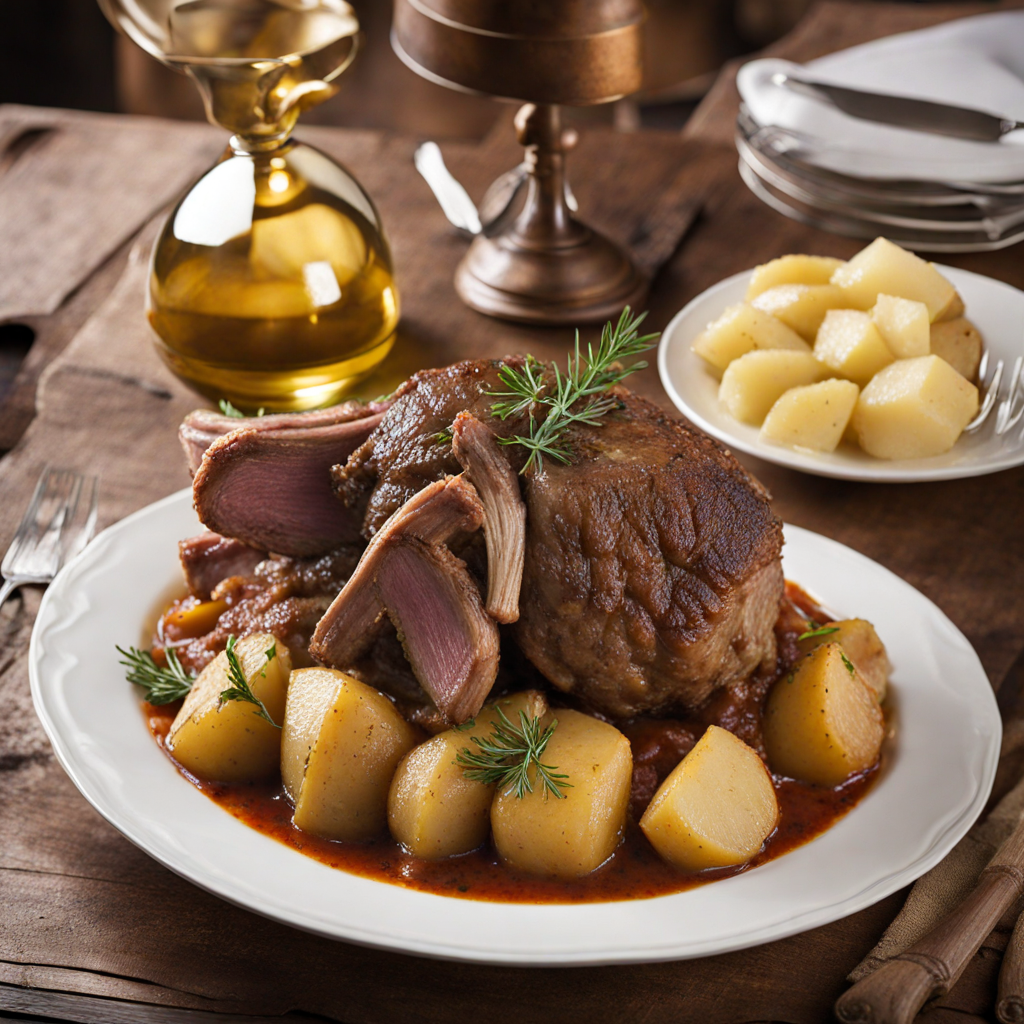Grilled Fish
Grilled fish in Croatia is a culinary delight that showcases the country’s rich maritime heritage and the abundance of fresh seafood available along its stunning Adriatic coastline. The preparation usually involves whole fish, such as sea bream or trout, which are often caught the same day. The fish is typically marinated with a simple yet flavorful mixture of olive oil, lemon juice, garlic, and fresh herbs like parsley and rosemary. This marination not only enhances the fish's natural flavors but also ensures a juicy and tender texture once grilled. The grilling process imparts a delightful smokiness that complements the fish beautifully, creating a dish that is both rustic and elegant. The presentation of grilled fish in Croatia is as inviting as its taste. Once grilled to perfection, the fish is often served whole on a wooden platter, garnished with seasonal vegetables, olives, and a drizzle of more olive oil. Accompanying sides may include traditional staples such as blitva (Swiss chard) with potatoes or a simple salad, emphasizing the freshness of the ingredients. Diners are encouraged to enjoy the fish with a squeeze of fresh lemon to elevate the flavors even further, making each bite a refreshing experience. The combination of the crispy skin and the flaky, succulent flesh creates a delightful contrast that is hard to resist. Eating grilled fish in Croatia is not just about the food; it’s an experience that embodies the spirit of Mediterranean dining. Often enjoyed al fresco with a glass of local white wine, such as Malvasija or Pošip, the meal becomes a celebration of the senses. The sound of waves crashing nearby, the aroma of the grill, and the vibrant colors of the surrounding landscape all contribute to a memorable dining experience. For those seeking a new taste adventure, grilled fish in Croatia is a must-try, offering a taste of the sea that is both authentic and unforgettable.
How It Became This Dish
The History of Grillana Riba: Croatia’s Grilled Fish Delight Introduction In the sun-kissed coastal regions of Croatia, where the Adriatic Sea meets the rugged shoreline, a culinary gem has emerged—Grillana Riba, or grilled fish. This dish is more than just a meal; it is a testament to the rich history, cultural significance, and evolving traditions of Croatian cuisine. As we delve into the origins, significance, and development of Grillana Riba, we uncover the layers of history that have shaped this beloved dish. Origins of Grillana Riba The roots of Grillana Riba can be traced back to the ancient Mediterranean civilizations. The Adriatic Sea, a crucial trade route since antiquity, was inhabited by various peoples, including the Illyrians, Romans, and Greeks, each contributing to the culinary practices of the region. Fishing has always been a vital livelihood for coastal communities, and the abundance of fish available led to a strong tradition of seafood consumption. The term “Grillana Riba” directly translates to “grilled fish,” indicating the primary cooking method used. The practice of grilling fish likely began as a practical solution for preserving the catch of the day. Early fishermen would cook their catch over open flames, a technique that not only preserved the fish but also imparted a smoky flavor that remains beloved today. This method was particularly favored in the Dalmatian region, where the climate and geography favored outdoor cooking. Cultural Significance Grillana Riba holds a significant place in Croatian culture and culinary identity. It is often associated with family gatherings, festive occasions, and summer celebrations along the coast. The preparation and sharing of grilled fish have become integral to Croatian hospitality, symbolizing the warmth and community spirit of the people. In many coastal towns, such as Split, Zadar, and Dubrovnik, Grillana Riba is a staple on restaurant menus and home kitchens alike. It embodies the Mediterranean lifestyle, where meals are not merely about sustenance but also about connection and celebration. The dish is often served with traditional sides such as blitva (Swiss chard), potatoes, or a simple salad, highlighting the freshness of local ingredients. Moreover, Grillana Riba is emblematic of the Croatian "konoba," a type of tavern that serves local dishes and wines. The konoba culture fosters a sense of community, where people gather to enjoy the flavors of the Adriatic while engaging in lively conversation. The popularity of Grillana Riba in konobas reinforces its status as a dish that brings people together. Ingredients and Preparation At the heart of Grillana Riba is the fish itself, which varies based on seasonal availability and local catch. Popular choices include sardines, sea bass, mackerel, and bream. The freshness of the fish is paramount, and many Croatian families take pride in sourcing their fish directly from local fishermen or markets. The preparation of Grillana Riba is straightforward yet requires skill and attention to detail. The fish is typically cleaned and seasoned with a generous drizzle of olive oil, salt, and sometimes a squeeze of lemon. Herbs such as rosemary, oregano, or parsley may also be added to enhance the flavor. The seasoned fish is then placed on a grill, often over charcoal or wood, allowing it to cook to perfection while retaining its natural juices. Development Over Time As Croatia has evolved, so too has the culinary landscape, and Grillana Riba has adapted to reflect these changes. The influence of globalization and modern culinary trends has introduced new techniques and flavors, yet the essence of the dish remains rooted in tradition. In recent years, the rise of culinary tourism has spotlighted Grillana Riba, drawing visitors eager to experience authentic Croatian cuisine. Food festivals celebrating local seafood, such as the Fishermen’s Festival in the coastal town of Novalja, have further popularized the dish. These events showcase not only the grilling techniques but also the rich history and culture surrounding seafood in Croatia. Additionally, the farm-to-table movement has gained traction, encouraging chefs and home cooks alike to prioritize local and sustainable ingredients. This has led to a renewed appreciation for the traditional practices of fishing and cooking, with many aiming to preserve the authenticity of Grillana Riba while embracing contemporary culinary innovations. With the increasing emphasis on healthy eating, Grillana Riba stands out as a nutritious option. Grilled fish is low in calories and high in omega-3 fatty acids, aligning with modern dietary preferences. This appeal has broadened its reach beyond local communities to international audiences, with many restaurants outside Croatia incorporating it into their menus. Conclusion Grillana Riba is more than just grilled fish; it is a culinary narrative that encapsulates the heart and soul of Croatia. From its ancient origins as a practical means of cooking to its modern-day status as a beloved dish, Grillana Riba reflects the deep connection between the Croatian people, their land, and the sea. As we savor a plate of Grillana Riba, we partake in a tradition that spans centuries, celebrating the flavors of the Adriatic while honoring the cultural significance woven into each bite. Whether enjoyed at a sun-drenched seaside konoba or grilled in the backyard with family and friends, Grillana Riba continues to be a cherished symbol of Croatian heritage, embodying the spirit of togetherness, community, and the joy of sharing good food.
You may like
Discover local flavors from Croatia


